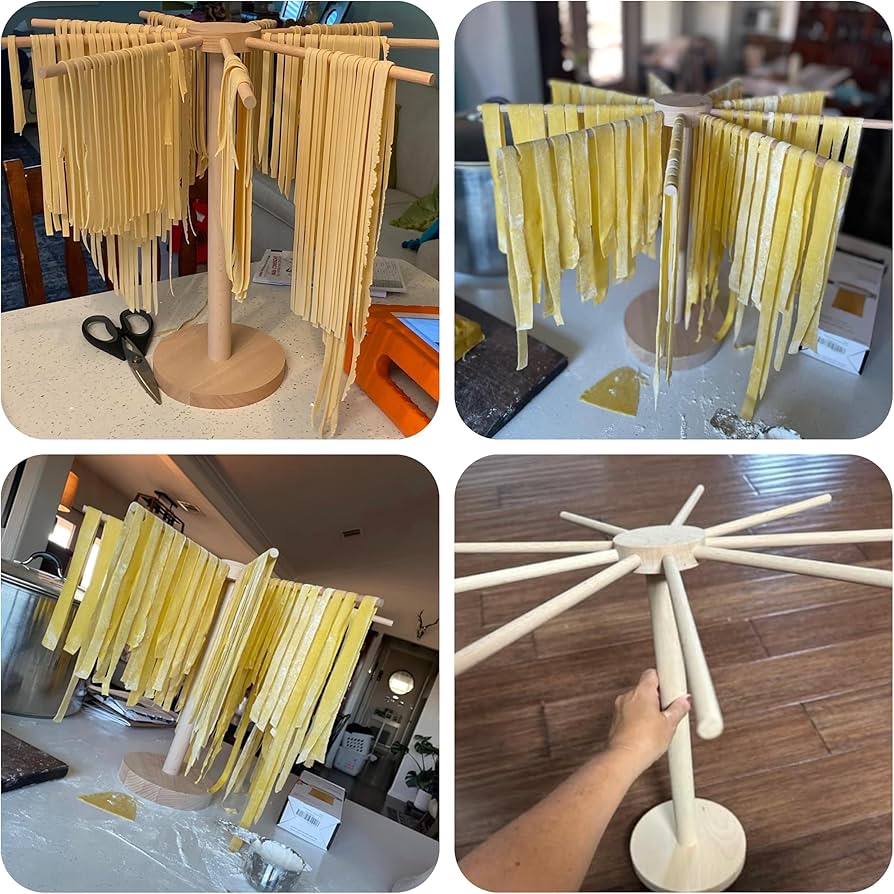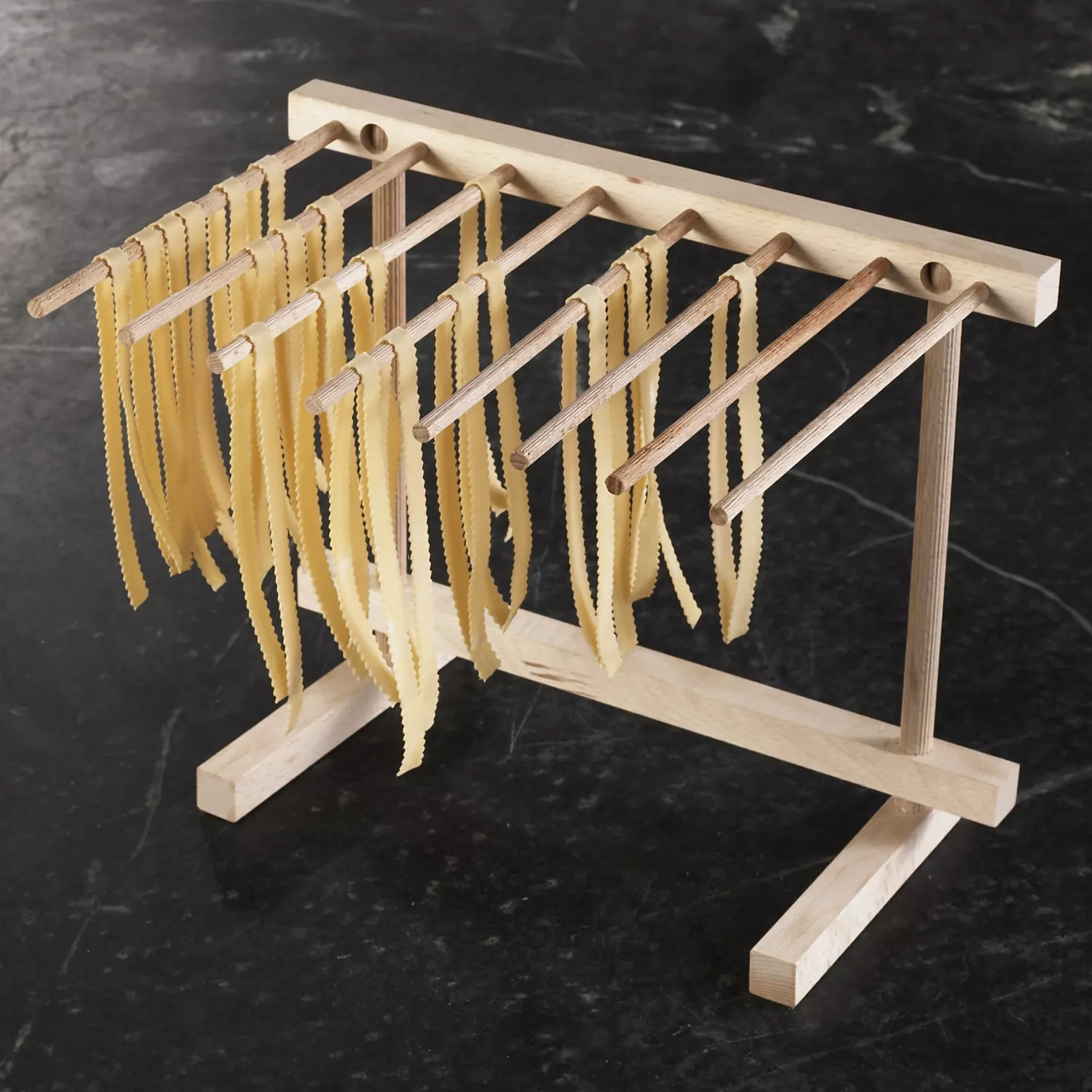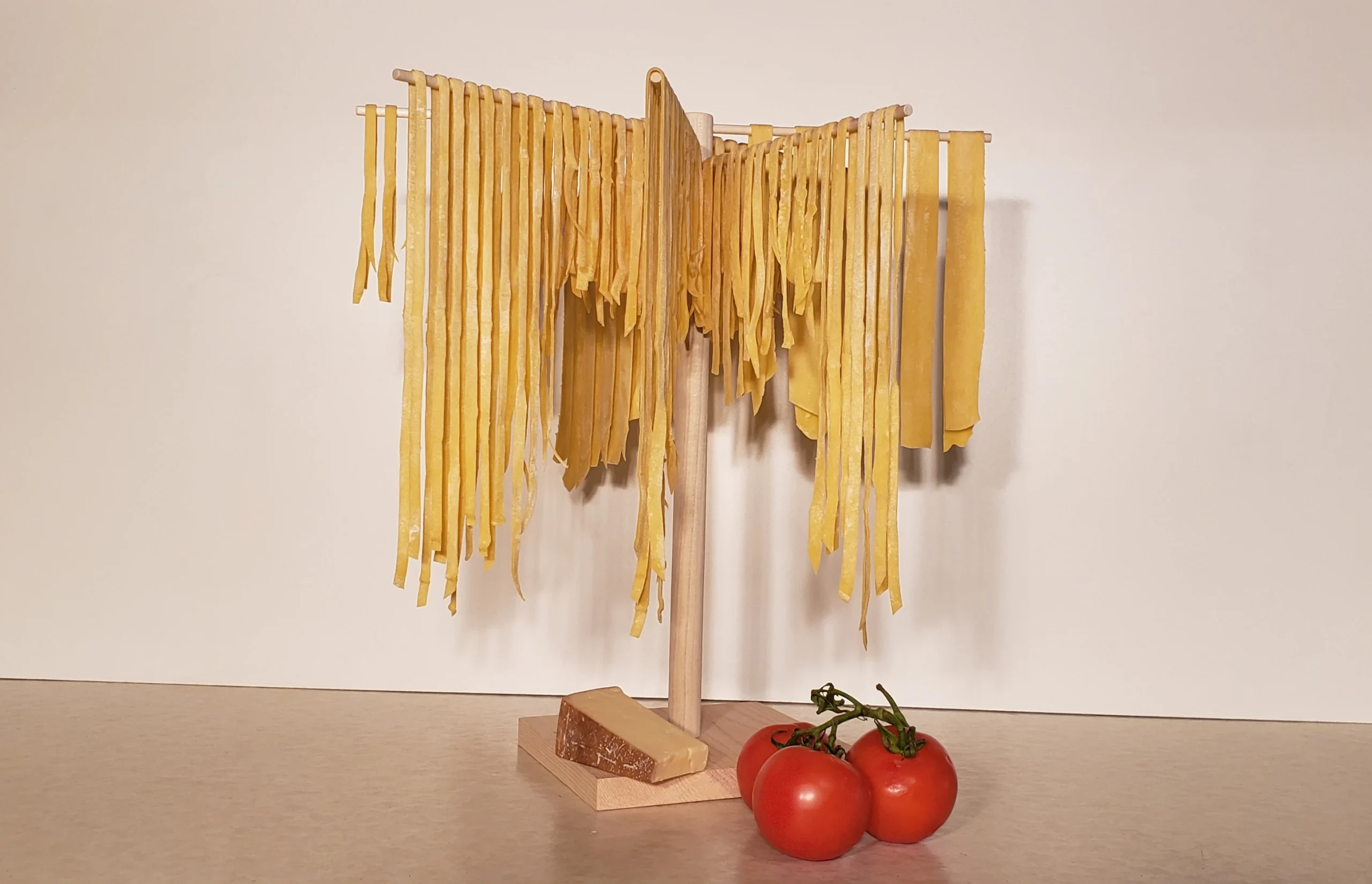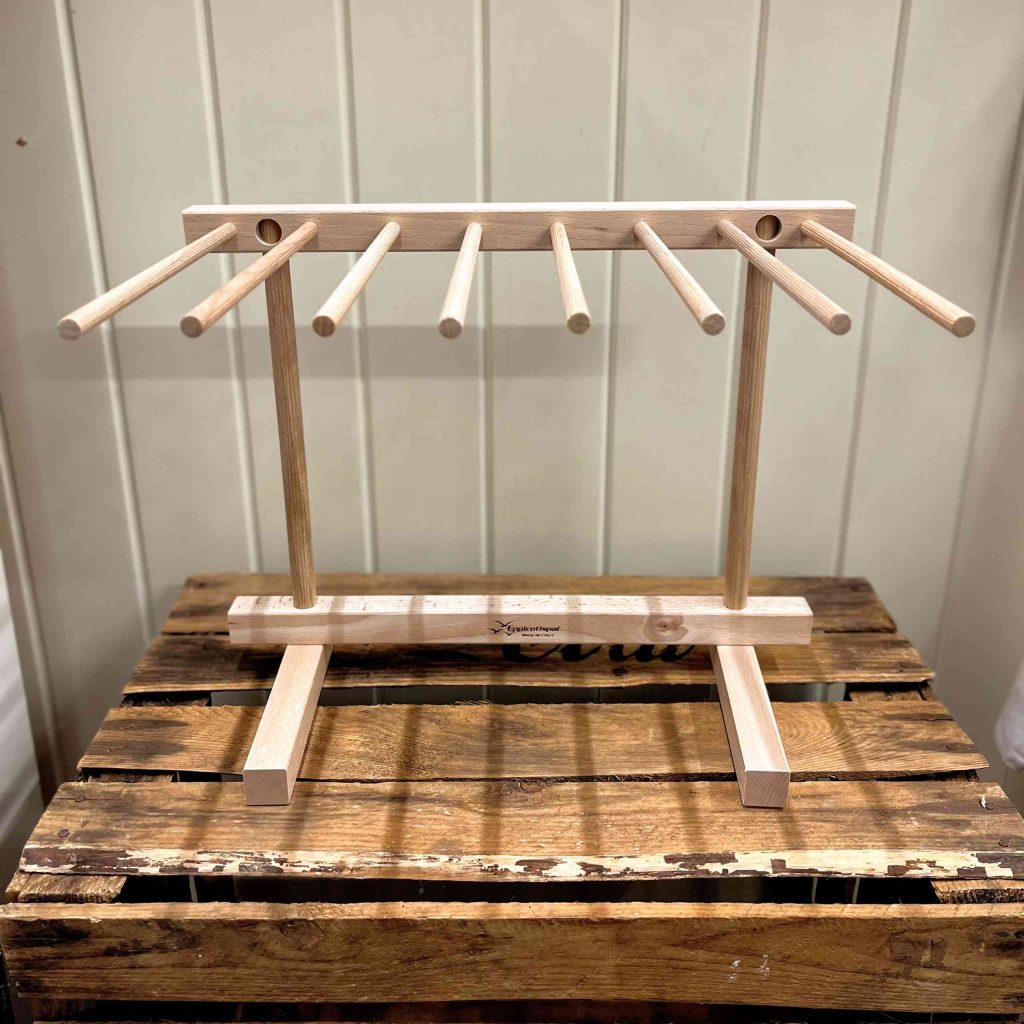The antique spaghetti dryer rack is a charming relic of culinary history, reflecting the artistry and practicality of vintage kitchen tools. Typically crafted in the late 19th to early 20th century, these racks were designed to facilitate the drying of homemade pasta, particularly spaghetti, in a way that was both efficient and aesthetically pleasing.
Design and Materials:

Material: Traditionally, antique spaghetti dryer racks were made from wood or metal. Wooden racks were often crafted from oak, maple, or cherry, chosen for their durability and resistance to moisture. Metal racks, usually made of iron or brass, were prized for their sturdiness and elegant design.
Structure: The rack features a series of horizontal or vertical rods or prongs where freshly made spaghetti or other types of pasta could be hung to dry. The design typically includes a central column or base from which the rods extend, allowing for ample air circulation around the pasta. The rods may be adjustable or removable, adding versatility to the rack’s use.
Aesthetic Elements: Antique racks often exhibit intricate craftsmanship, with details such as carved wooden elements, ornate metalwork, or decorative finials. These features not only served a functional purpose but also added a touch of elegance to the kitchen or dining area.

Functionality:
Purpose: The primary function of the spaghetti dryer rack was to support and evenly dry homemade pasta, ensuring it retained its shape and texture before cooking. Proper drying was essential to prevent clumping and to enhance the pasta’s flavor and quality.
Usage: To use the rack, cooks would hang individual strands of pasta across the rods. The open design allowed air to circulate freely, facilitating thorough drying. Once the pasta was fully dried, it could be stored for later use.
Historical Significance:

Antique spaghetti dryer racks are a testament to the artisanal approach to food preparation that characterized earlier culinary practices. During a time when pasta-making was a labor of love, these racks represented a blend of functionality and artistry, reflecting the importance of homemade food in family and social life.
Collectibility and Value:
Rarity: Original antique spaghetti dryer racks, particularly those in excellent condition or featuring unique designs, are sought after by collectors and enthusiasts of vintage kitchenware. Their rarity and historical value can make them a prized addition to a collection.
Condition: The value of an antique rack can vary based on its material, craftsmanship, and condition. Well-preserved examples with original finishes and minimal wear are typically more valuable.
The antique spaghetti dryer rack is more than just a practical kitchen tool; it is a beautiful artifact that captures the essence of past culinary traditions. Its craftsmanship and design offer a glimpse into the domestic life of bygone eras, making it a fascinating piece for collectors and history enthusiasts alike.

